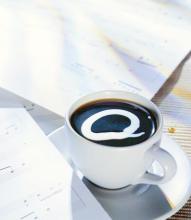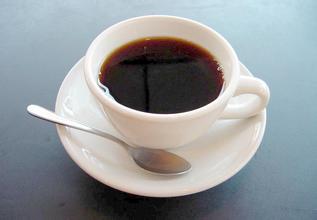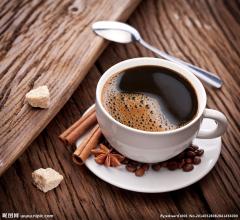Hawaiian Fine Coffee beans Kona Coffee introduction Hawaiian Kona Coffee Price Hawaiian Kona Coffee
Coffee grade Kona coffee is divided into four grades, namely Extra Fancy, Fancy, Prime and Gr.No.1. Due to low production and high production costs, in the case of increasing demand for boutique coffee, the price of Kona on the market is catching up with the Blue Mountain of Jamaica, and the best Kona beans are becoming more and more difficult to buy.
The quality of Kona coffee with excellent growth environment is suitable for the suitable geographical location and climate. Coffee trees grow on the slopes of volcanoes, and their geographical location ensures the altitude needed for coffee to grow; the dark volcanic ash soil provides the necessary minerals for coffee. This is probably due to the fact that Kona Island is rich in volcanic black mud with moderate acidity, rich mineral content and suitable water content. And every afternoon, a cloud floats over the island of Kona to block out the sun to protect fragile coffee saplings. The climate is very suitable, the sun in the morning gently passes through the air full of water vapor, in the afternoon, the mountains will become more humid and foggy, and the white clouds surging in the air are natural umbrellas for coffee trees, and the evening will become sunny and cool. Because of the suitable natural conditions, the average yield of Kona coffee is very high, reaching 2240 kg per hectare, while the yield of coffee in Latin America is only 600 kg to 900 kg per hectare.
Kona Coffee is grown without shelter. Hawaii has an island climate, often with a dark cloud, resulting in a shading effect. Coffee farmers in Hawaii usually keep their farms quite clean, and the fertile land, coupled with the fine management of farmers, is suitable for the climate in which coffee grows. Kona Coffee has become a boutique coffee on the market.
Kona coffee is made by washing and natural drying. Hawaii's clean and sweet mountain spring water provides the ideal conditions for washing, which creates the bright appearance and pure and fresh taste of Kona coffee beans. The washed coffee beans are placed on a huge plate and dried naturally by the sun.
The raw beans of Kona coffee are usually small packaged coffee beans. Kona coffee is also often used to make blended coffee along with other coffee beans. Kona beans mixed with other beans will be marked with "KonaBlend" on the package. Unfortunately, the content of Kona beans in this mixed bean may be very low, and the minimum content of Kona beans in Hawaii that can use the "Kona" label is only 10%. Kona coffee beans produced in Hawaii are the most beautiful coffee beans in the world. they are extremely full and shiny. Kona coffee beans are evenly shaped, have a strong sour and sweet taste, and taste wet and smooth. Hawaii's unique volcanic climate contributes to the unique aroma of Kona coffee and high-density artificial farming, so every bean can be said to be spoiled.
Kona Coffee is fresh, crisp, medium-bodied, slightly sour and full-bodied, with a long finish. The most rare thing is that Kona coffee has a mixed aroma of wine, fruit and spices, which is as charming as the colorful colors of this volcanic archipelago, so that some people think that this gentleness is synonymous with mediocrity. I think Kona is too refreshing and too simple. But if you are the kind of person who must slowly get into the state with the aroma of coffee before tasting it, Kona is the right coffee for you. He is not as mellow as Indonesian coffee, not as full-bodied as African coffee, let alone as rugged as Central and South American coffee.

Important Notice :
前街咖啡 FrontStreet Coffee has moved to new addredd:
FrontStreet Coffee Address: 315,Donghua East Road,GuangZhou
Tel:020 38364473
- Prev

Colombian Fine Coffee Bean Flavor taste Manor characteristics introduce Colombian Coffee Bean Brand
Because Huilan area belongs to the mountain terrain and coffee is planted on the slopes of the canyon, it has a high altitude and suitable temperature for growing high-quality Arabica beans. The climate of the canyon slope not only prevents the cold wind from blowing in, but also keeps the mountain breeze cool without high temperature, and Rain Water is also relatively abundant, which can be said to be a unique place for coffee cultivation. And plus the Colombian coffee maker
- Next

Introduction to the flavor and taste characteristics of Sumatra boutique coffee bean Manor Manor
Mantenin's leaping acid mixes with the richest aroma, making your relaxed body manning coffee lively in a mild fragrance, and its outstanding taste captivates many suitors. In the 17th century, the Dutch introduced Arabica seedlings to Ceylon (present-day Sri Lanka) and Indonesia. In 1877, a large-scale disaster struck Indonesia
Related
- Detailed explanation of Jadeite planting Land in Panamanian Jadeite Manor introduction to the grading system of Jadeite competitive bidding, Red bid, Green bid and Rose Summer
- Story of Coffee planting in Brenka region of Costa Rica Stonehenge Manor anaerobic heavy honey treatment of flavor mouth
- What's on the barrel of Blue Mountain Coffee beans?
- Can American coffee also pull flowers? How to use hot American style to pull out a good-looking pattern?
- Can you make a cold extract with coffee beans? What is the right proportion for cold-extracted coffee formula?
- Indonesian PWN Gold Mandrine Coffee Origin Features Flavor How to Chong? Mandolin coffee is American.
- A brief introduction to the flavor characteristics of Brazilian yellow bourbon coffee beans
- What is the effect of different water quality on the flavor of cold-extracted coffee? What kind of water is best for brewing coffee?
- Why do you think of Rose Summer whenever you mention Panamanian coffee?
- Introduction to the characteristics of authentic blue mountain coffee bean producing areas? What is the CIB Coffee Authority in Jamaica?

